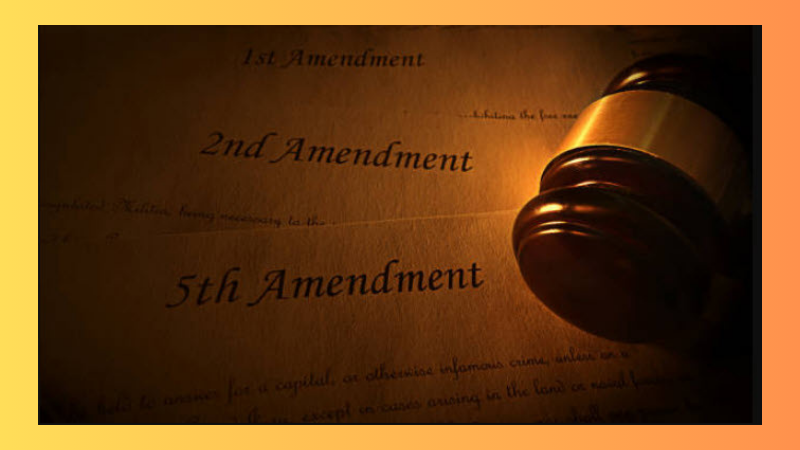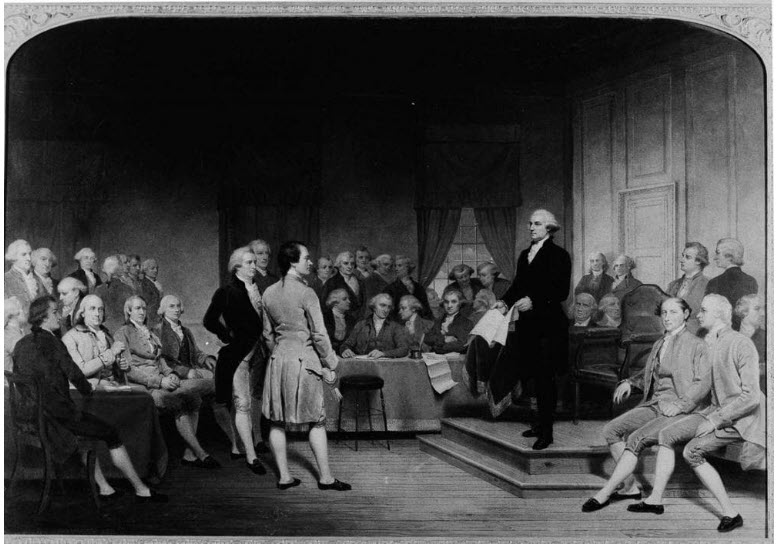We The People Are Being Misled: The Truth About Constitutional Amendments

There is a constitutional amendment for every problem in the United States, or so politicians would have us believe.
Is it your view that abortion is unraveling the moral fabric of America? Somewhere, a conservative politician is campaigning for a constitutional amendment to ban abortion with exceptions only in cases of rape and incest.
Do you believe that unlimited corporate campaign expenditures is a threat to democracy? A progressive politician out there is pledging to amend the Constitution to overturn the Supreme Court’s ruling in Citizens United, which gave corporations largely the same campaign speech rights individuals enjoy.
Cast our vote for them, these politicians say, and together we will fix the problem, whatever it is, with a constitutional amendment.
The real battleground is not Congress anymore, anyway. The fight for social change now occurs in the states and the courts, away from the onerous procedures of constitutional amendment.
They know better, and so should we.
For one, the United States Constitution is probably the most difficult in the world to amend. The numbers do not lie: of the over 10,000 amendments that have been introduced by members of Congress, only 27 have made it into the Constitution.
A good idea for a constitutional amendment is one thing, but it is more important to have a plan to meet the Constitution’s requirement for passing one: approval by two-thirds of both the Senate and the House of Representatives, and also by three-quarters of the states. This is a tall order in any political climate, particularly today when it is virtually impossible to imagine a divided Congress and distrusting states agreeing by a supermajority to anything, let alone on something as significant as a constitutional amendment.
It has not always been this hard to amend the Constitution. Amendments have occurred in waves corresponding to periods of intense social upheaval. At the founding, for instance, the Constitution was amended 10 times in 1791 to create what is known today as the Bill of Rights. Later, during Reconstruction in a five-year span, the Thirteenth Amendment abolished slavery in 1865, the Fourteenth Amendment promised equal treatment under law in 1868, and the Fifteenth Amendment sought to enfranchise generations of former slaves in 1870.
The next wave came in a seven-year period before and during America’s progressive era. The Sixteenth Amendment authorized a federal income tax in 1913, the Seventeenth Amendment created direct elections for U.S. Senators in the same year, the Eighteenth Amendment prohibited alcohol in 1919, and the Nineteenth Amendment guaranteed women the right to vote in 1920.
The final wave of constitutional amendments came in a six-year period during the tumultuous 1960s against the backdrop of the Vietnam War, the expansion of civil rights, and the assassination of President John F. Kennedy. America adopted the Twenty-Third Amendment in 1961 to give Washington, D.C. a voice in the Electoral College, the Twenty-Fourth Amendment in 1964 to protect the right to vote with a ban on poll taxes, and the Twenty-Fifth Amendment in 1967 to clarify the rules of presidential and vice-presidential succession.

George Washington is depicted in the 1856 painting "George Washington Addressing the Constitutional Convention" by Junius Brutus Stearns, depicting a climactic moment at the end of the convention. (AP)
We could use another wave of amendments today. A balanced budget amendment might be a good idea; something similar is now popular in Europe as countries search for ways to deal with their own financial pressures or an amendment to guarantee marriage equality for all women and men to freely enjoy the full benefits and status of marriage. Or perhaps even an amendment to make it easier to amend the Constitution. But none of these will happen anytime soon.
Most conservative politicians do not really want to amend the Constitution to ban abortion for good. Nor do their progressive counterparts really want a constitutional amendment to ban corporate campaign speech. Both amendments would spell the end of their best get-out-the-vote and fundraising strategies. Politicians rely on these deeply partisan, and mythical, amendments to fill their coffers, get elected, and then do it all again in the next electoral cycle.
The real battleground is not Congress anymore, anyway. The fight for social change now occurs in the states and the courts, away from the onerous procedures of constitutional amendment.
Today’s major battles between advocates of marriage equality and traditional marriage, affirmative action and race-neutrality, and choice and life often begin either in the states where constitutional amendment is generally much easier, or as legal challenges in federal courts, or sometimes both.
That’s why the stakes are so high in judicial confirmations. Senators, lobbyists and increasingly everyday voters recognize that constitutional change today happens more commonly through the judicial interpretation of the Constitution rather than its amendment. The power of judicial review authorizes federal courts to evaluate the constitutionality of virtually everything, which means the Constitution is basically amended anytime a judge interprets the Constitution to mean something new.
The Constitution is in dire need of repair, but the kinds of changes we need... are possible only with old-style constitutional amendment and that door is shut for now.
The Supreme Court effectively amended the Constitution when it ruled in Roe v. Wade in 1973 that the right to privacy protects a woman’s right to an abortion. The right to privacy is of course mentioned nowhere in the text of the Constitution. Likewise the Court effectively amended the Constitution when it struck down campaign finance limits on independent corporate speech, likening a bricks-and-mortar corporation to a blood-and-guts person. The effect of such a judicial opinion is the same as an actual amendment because it is the law of the land.
These judicial “amendments” do not get added to the written Constitution. They are instead codified in the Court’s judicial opinions. Yet they are as durable as constitutional amendments.
The real issue, though, is how difficult it is to actually amend the Constitution. The Constitution is in dire need of repair, but the kinds of changes we need — to the obstructive filibuster rule, the antiquated legislative process, the problematic Electoral College, to name three — cannot be made by judicial amendment. They are possible only with old-style constitutional amendment and that door is shut for now.
Absent a major effort to start over with an entirely new constitution that makes governing possible, the not-yet-broken-but-arguably-breaking structure of government could accelerate the declining path on which many fear the United States may be heading. As it happens, this is the same choice America faced in 1787 when the founders replaced the Articles of Confederation with the Constitution that governs to this day. Few things last forever. What makes the United States Constitution so special?

